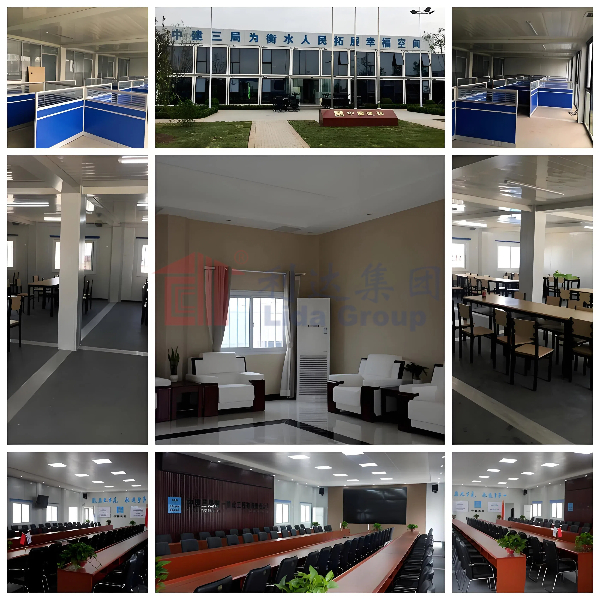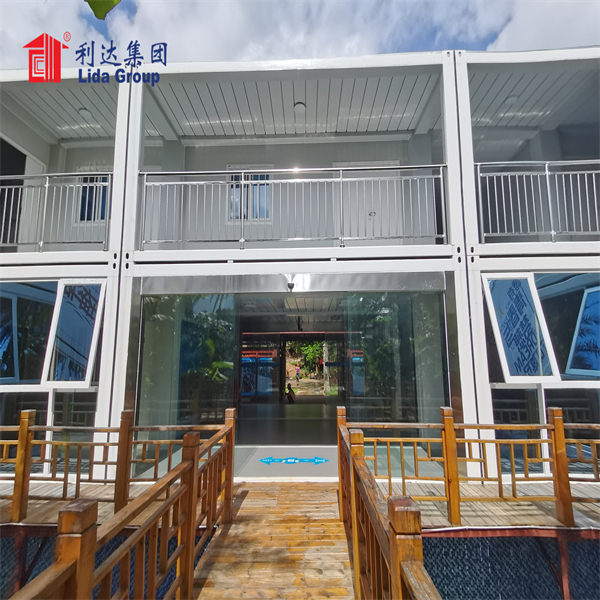Introduction
In recent years, the concept of office containers has gained significant traction as a flexible and innovative solution to the evolving needs of modern infrastructure. These portable, modular units have transformed traditional notions of office space, offering adaptability for various industries and applications. This article explores the role of office containers in contemporary infrastructure, examining their benefits, applications, design features, and future potential.
Understanding Office Containers
Benefits of Office Containers
1. Flexibility and Scalability
One of the primary advantages of office containers is their flexibility. Businesses can easily scale their operations by adding or removing units as needed. This adaptability is particularly valuable for startups and companies experiencing growth.
a. Customizable Layouts
Office containers can be designed with customizable layouts to suit different work styles. Open-plan designs, private offices, meeting rooms, and collaborative spaces can all be incorporated into a single unit or an arrangement of multiple containers.
b. Quick Deployment
Office containers can be deployed rapidly, enabling businesses to establish a presence in new locations without the lengthy timelines associated with traditional construction.
2. Cost-Effectiveness
The cost-effectiveness of office containers is another compelling reason for their popularity.
a. Reduced Construction Costs
Building traditional office spaces can be prohibitively expensive due to construction materials and labor costs. Office containers, on the other hand, often require fewer resources and can be assembled quickly, reducing overall expenses.
b. Lower Operational Costs
With efficient designs and insulation, office containers can lead to lower energy consumption and reduced utility bills. Additionally, their portability allows businesses to relocate to more cost-effective locations as needed.
3. Sustainability
In an era of increasing environmental awareness, office containers present sustainable alternatives to traditional office buildings.
a. Reuse of Materials
By repurposing shipping containers, businesses contribute to waste reduction and sustainable practices. This approach minimizes the need for new materials and reduces the overall carbon footprint.
b. Energy Efficiency
Many office containers can be equipped with energy-efficient systems, such as solar panels, LED lighting, and high-quality insulation. These features not only reduce energy consumption but also enhance employee comfort.
4. Mobility and Accessibility
The mobility of office containers is a significant advantage for businesses operating in dynamic environments.
a. Temporary Workspaces
For industries such as construction, mining, and disaster relief, office containers can serve as temporary workspaces that can be relocated as projects progress or needs change.
b. Remote Locations
Office containers are well-suited for remote locations where traditional infrastructure is lacking. They can be transported to sites that require immediate office space, ensuring that operations can commence without delay.
Applications of Office Containers
1. Construction Sites
Office containers have become a staple on construction sites, serving as site offices, break rooms, and storage facilities. Their portability allows construction companies to establish efficient operations in various locations.
2. Educational Institutions
Schools and universities have begun utilizing office containers to address space shortages. These units can serve as classrooms, administrative offices, or student services, providing flexible solutions for growing institutions.
3. Healthcare Facilities
In response to the increasing demand for healthcare services, office containers have been repurposed as medical clinics, vaccination centers, and administrative offices for healthcare providers. Their modular nature allows for quick setup in response to urgent needs.
4. Retail and Hospitality
The retail and hospitality sectors have embraced office containers for pop-up shops, cafes, and temporary accommodations. These units can be designed to create unique customer experiences while maintaining operational efficiency.
5. Remote Work Solutions
With the rise of remote work culture, office containers offer businesses an alternative to traditional office spaces. Companies can create dedicated workspaces for remote teams or provide on-site facilities for employees in flexible work situations.
Design Features of Office Containers
1. Modular Design
The modular design of office containers allows for easy stacking and arrangement. This feature enables businesses to create multi-story office complexes or expansive workspaces tailored to their needs.
2. Insulation and Climate Control
Modern office containers can be equipped with advanced insulation materials and climate control systems, ensuring a comfortable working environment year-round. This is particularly important for units located in extreme climates.
3. Connectivity
Office containers are designed with connectivity in mind. They can be equipped with high-speed internet, phone lines, and other essential technologies to support modern business operations.
4. Aesthetics
While functionality is crucial, the aesthetics of office containers should not be overlooked. Many companies are investing in design elements that enhance the visual appeal of these units, incorporating branding, colors, and modern finishes.
Challenges of Office Containers
1. Zoning and Regulations
While office containers offer flexibility, navigating zoning laws and building regulations can be challenging. Businesses must ensure compliance with local codes to avoid potential legal issues.
2. Perceptions and Acceptance
Despite their benefits, some businesses and communities may have preconceived notions about the quality and aesthetics of office containers. Educating stakeholders about their advantages is essential for broader acceptance.
3. Limited Space
While office containers offer flexibility, they do have space limitations. Businesses must carefully plan layouts to ensure that all necessary functions can be accommodated within the available square footage.
The Future of Office Containers
1. Increased Adoption
As businesses continue to seek flexible and cost-effective solutions, the adoption of office containers is expected to grow. Industries such as education, healthcare, and construction will likely lead this trend.
2. Advancements in Design
Innovations in design and technology will enhance the functionality and appeal of office containers. The integration of smart technologies, sustainable materials, and advanced construction methods will redefine their role in modern infrastructure.
3. Customization Options
The demand for personalized workspaces will drive the customization of office containers. Businesses will seek tailored solutions that reflect their brand identity and cater to employee needs.
4. Integration with Urban Planning
As urban areas become more congested, the integration of office containers into urban planning will become increasingly important. These units can provide flexible solutions for addressing space shortages in growing cities.
Conclusion
The role of office containers in modern infrastructure is multifaceted and continues to evolve. Their flexibility, cost-effectiveness, sustainability, and mobility make them an attractive option for various industries. As businesses adapt to changing demands and seek innovative solutions, office containers will play an increasingly vital role in shaping the future of work environments.
By embracing the potential of office containers, organizations can create adaptable spaces that foster collaboration, enhance productivity, and contribute to sustainable practices. As the landscape of work continues to shift, the versatility of office containers positions them as a key player in the infrastructure of tomorrow.
Contact Us
Post time: Sep-14-2024


